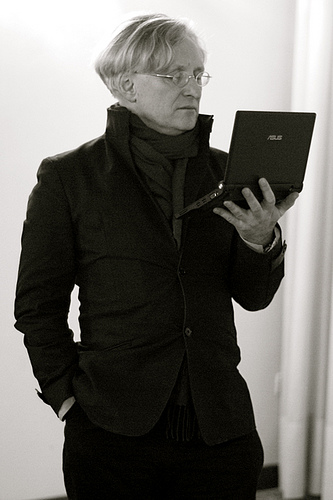

This is my sixth annual address to this noble institution.
Since I occasionally make predictions, or quote other people's predictions, I like to review them briefly at the start of each talk.
I discussed why Facebook (and other websites with user-contributed content) are bad for the web.
I introduced RDFa as a new technology for making web pages machine-readable.
Now adopted by Yahoo, Google, US and UK governments, Drupal, Facebook, Newsweek, just to name a few. Bestbuy in the US reports that it improved their Google rank tremendously, gave a 30% increase in traffic, and a 15% increase in click-throughs. Last time it was measured, nearly 4% of websites used RDFa "fastest growing format on the web".
"Affordable 60-watt-equivalent LED in 2 years": I bought an 80W equivalent bulb last week for €10. Prices will continue to drop (36 month halving cycle).
I discussed how and why new technologies cause the death of incumbent companies. One technology I discussed was digital photography. Amazingly last year, Kodak went bankrupt.
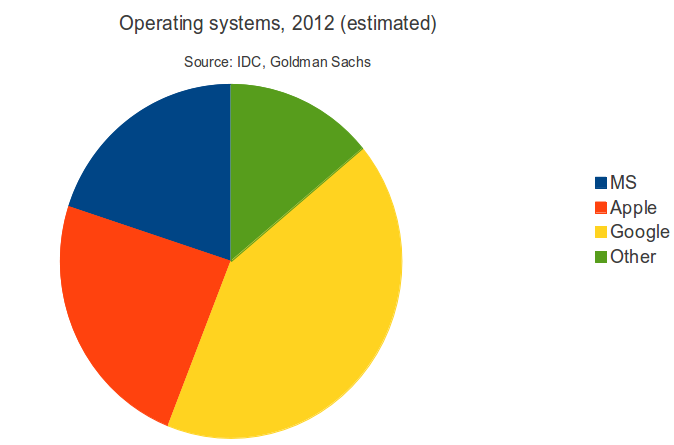 I asked "Is Linux a
Disruptive Technology?" and quoted "Linux will
outship Windows on new PCs in 2009". That was before Microsoft created the
cheap Windows 7 Starter, which delayed the rise of Linux. But look now (all
computing devices, not just PCs):
I asked "Is Linux a
Disruptive Technology?" and quoted "Linux will
outship Windows on new PCs in 2009". That was before Microsoft created the
cheap Windows 7 Starter, which delayed the rise of Linux. But look now (all
computing devices, not just PCs):
The yellow, and part of the green, is Linux: about half of current computing devices use Linux (and that's not counting wireless routers, satnav, internet radios...).
Solid state memory prices: the decline continues, this time last year prices had just dropped below €1/GB for the first time in the Netherlands. Now prices are below 50 cents/GB.
(Which makes it 'interesting' that you pay €500 for a 16GB iPad, and €600 for a 32GB iPad: no wonder the iPad doesn't have an SD slot.)
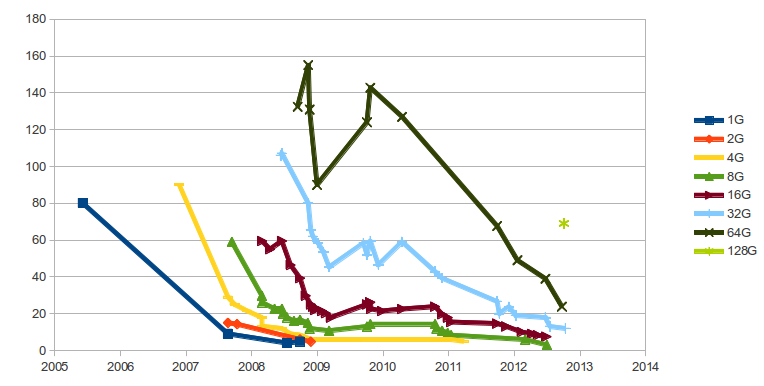
I noted that each time computer prices dropped by a factor of ten, you got a new class of computers that got used in a different way.
1M: Mainframe
100K: Minicomputer
10K: Workstation
1K: PC
and that netbooks (and now tablets) are the €100 computer, and I predicted the coming of a €10 computer. (More on this later)
This year, the first €10 computer, the Raspberry Pi arrived:
 This has about
the same power as a ¤100 computer from 6 years ago, or a ¤1000 computer from
10 years ago.
This has about
the same power as a ¤100 computer from 6 years ago, or a ¤1000 computer from
10 years ago.
DNA is a sort of memory > Evolution of true memory > Language, passes memories > Writing records memories that outlive you.
Now researchers have found a way to use DNA as a (very slow) storage medium.
DNA storage breakthrough: 700TB of data in one gram (That would require 140,000 DVDs, or 150kg of hard disks).
I talked about the physical, psychological and social aspects of colour perception, noting that if we had more than three types of colour receptor, we would see the world very differently. As shrimps do:
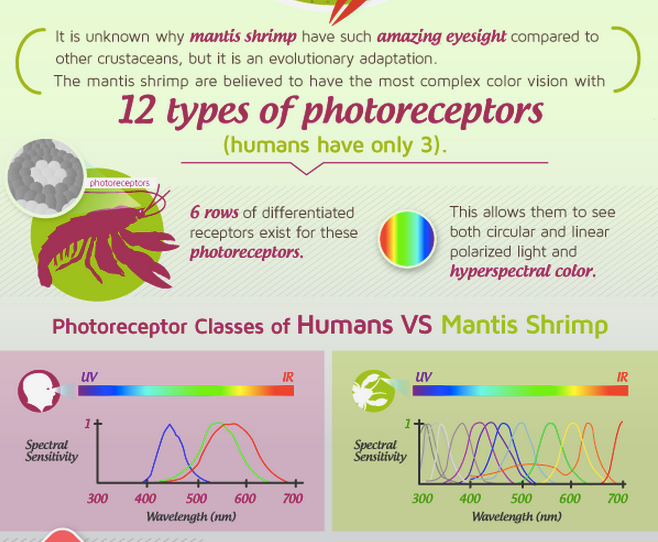
Computer monitors for shrimps would need 12 different colour sources (not just RGB), and instead of specifying colours on webpages like #ffee34, we would be writing #fae3d14cfb6a918273645542 (interestingly HSL notation would remain the same).
If you want to think about the future, you should think about the past too.
"At [The Institute for the Future], we always make a point to look back at history before starting any forecast." - David Pescovitz



"Copied by E. Grosser, Esqr, from an Ancient Drawing said to have been made by LIVENS, a Disciple of Rembrant. London Pub May 1790, by E. Harding, No 132 Fleet Street".
Might this be true? Thanks to the Semantic Web and europeana.eu I could answer that question:




The third printing press in England was set up here in 1479

Printed on that press. Note how it imitates a manuscript.
Until the introduction of printing, books were rare, and very, very expensive, maybe something like the same price as a small farm.
Only very rich people, and rich institutions, owned books.
The first Universities were set up before printing, and if you were a student, the price for borrowing a book was copying it. Usually book lenders only lent you part of the book at a time, to speed up the copying.
The other producers of books were the monasteries.

"When the Anglo-Saxon Monkwearmouth-Jarrow Abbey planned to create three copies of the bible in 692—of which one survives—the first step necessary was to plan to breed the cattle to supply the 1,600 calves to give the skin for the vellum required."
Producing books was slow, expensive, time-consuming, and tedious, as evinced by some of the remarks written by monks that have survived in the margins of manuscripts:
Oh, my hand.
Thank God it will soon be dark.
Writing is excessive drudgery. It crooks your back, it dims your sight, it twists your stomach, and your sides.
St Patrick of Armagh, deliver me from writing.
As the harbour is welcome to the sailor, so is the last line to the scribe.
Now I've written the whole thing: for Christ's sake give me a drink.

Gutenberg brought known technologies together (just like the web did): ink, paper, wine presses, movable type.
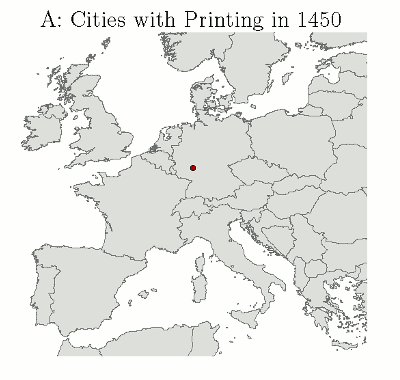
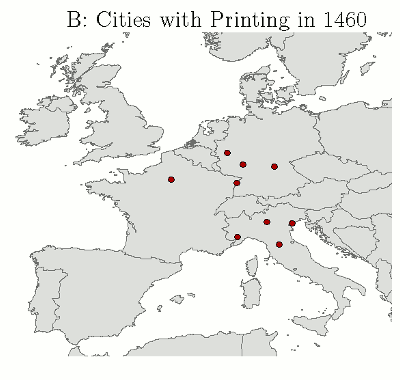
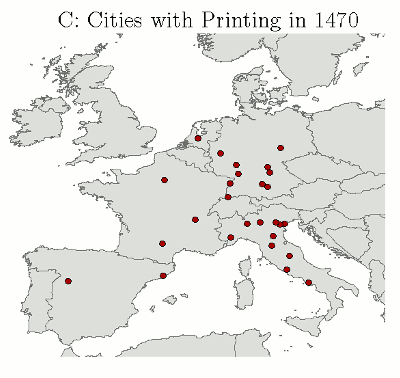
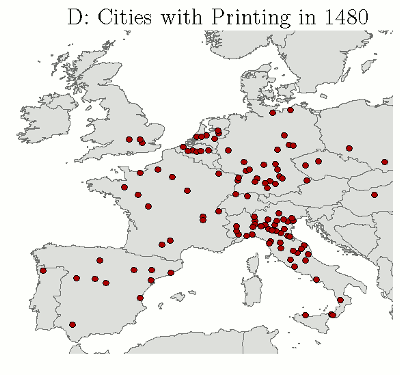
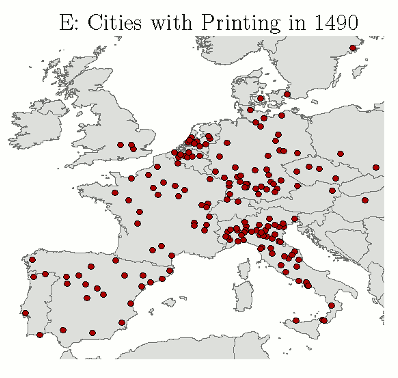
By 1500 there were 1000 printing shops in Europe, which had produced 35,000 titles and 20 million copies.
Price of books greatly diminished (First bible 300 florins, about 3 years wages for a clerk).
Books became a new means of distribution of information.
It was a paradigm shift - new industries, bookshops, newspapers.
Many ascribe the enlightenment to the availability of books.
1665: first scientific journals French Journal des Sçavans and the British Philosophical Transactions
From then on the number of scientific journals doubled every 15 years, right into the 20th century.
Even as late as the 1970's if you had said "there has to come a new way of distributing information to support this growth", they would have thought you crazy, more likely expecting the growth to end.
But now that we have the internet, the amount of information produced continues to increase at an exponential rate (doubling every three years according to one report, every 11 hours according to a newer one).
If something doubles at regular intervals, it is called an exponential growth.
Note that a doubling per 2 years is the same as a 10 fold increase every 6 and a bit years; we call a 10-fold increase an order of magnitude change.
"An order of magnitude quantitative change is a qualitative change"

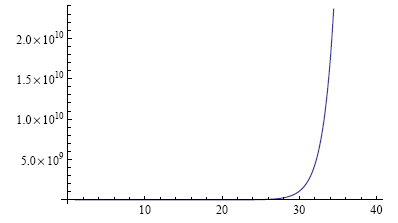
Note how there now seems to be nearly no action before iteration 26. The 'knee' is a fiction, a visual effect of the scaling used.
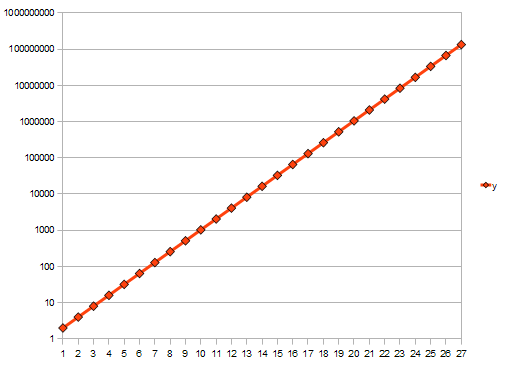
(Note that the steps are in powers of 10: 100, 101, 102... Half-way between 1 and 10 isn't 5 on a log scale, but 10½ = √10 = 3.16)
In 1965 Gordon Moore predicted that integrated circuits would double in power each year at constant price 'for at least 10 years'.
In 1975 he adjusted that to a doubling every 18 months.
That's an order of magnitude increase every 5 years.
"An order of magnitude quantitative change is a qualitative change"
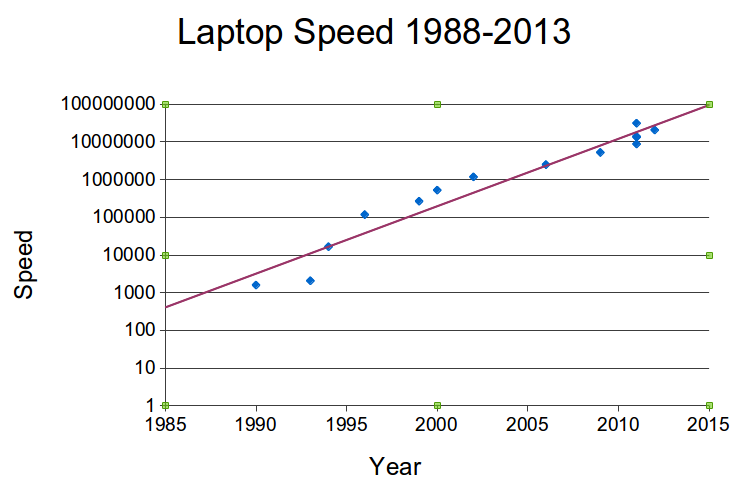
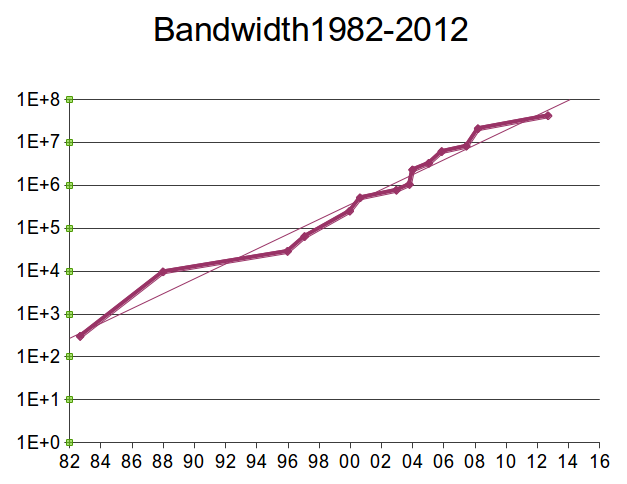
This is November 2006:
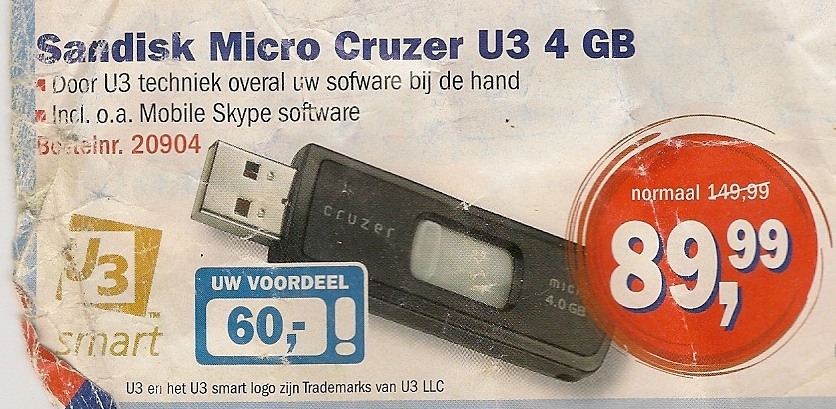
Six years later, the cheapest 4GB stick costs €2.99.
Screens are subject to similar drops too.
Often people don't understand the true effects of exponential growth.
A BBC reporter recently: "Your current PC is more powerful than the computer they had on board the first flight to the moon". Right, but oh so wrong (Closer to the truth: your current computer is several times more powerful than all the computers they used to land a man on the moon put together.)
Take a piece of paper, divide it in two, and write this year's date in one half:
Now divide the other half in two vertically, and write the date 18 months ago in one half:
Now divide the remaining space in half, and write the date 18 months earlier (or in other words 3 years ago) in one half:
Repeat until your pen is thicker than the space you have to divide in two:
This demonstrates that your current computer is more powerful than all other computers you have had put together (and way more powerful than the computer they had on board the first moonshot).
Surely, but don't hold your breath. Over the years, I have heard many predictions that it was "nearly" at an end.
Processor clock speeds have reached their maximum.
The increase is now in number of cores. (Although a CPU now has a handful of cores, GPUs -- which contain maybe 90% of the power of a computer -- have around 1000).
We will have to find a new computing paradigm to deal with the ever-increasing number of cores.
We actually use Moore's law to reduce the price we pay, at the same time as increasing the power (in 1990 people were willing to pay ¤4500 for a desktop computer).
We have seen
(¤ is the international character for "unit of currency", and it doesn't matter here whether we use $ € or £, since we are talking orders of magnitude)
We really should have expected the emergence of the ¤100 machine, and the question is really why it took so long.
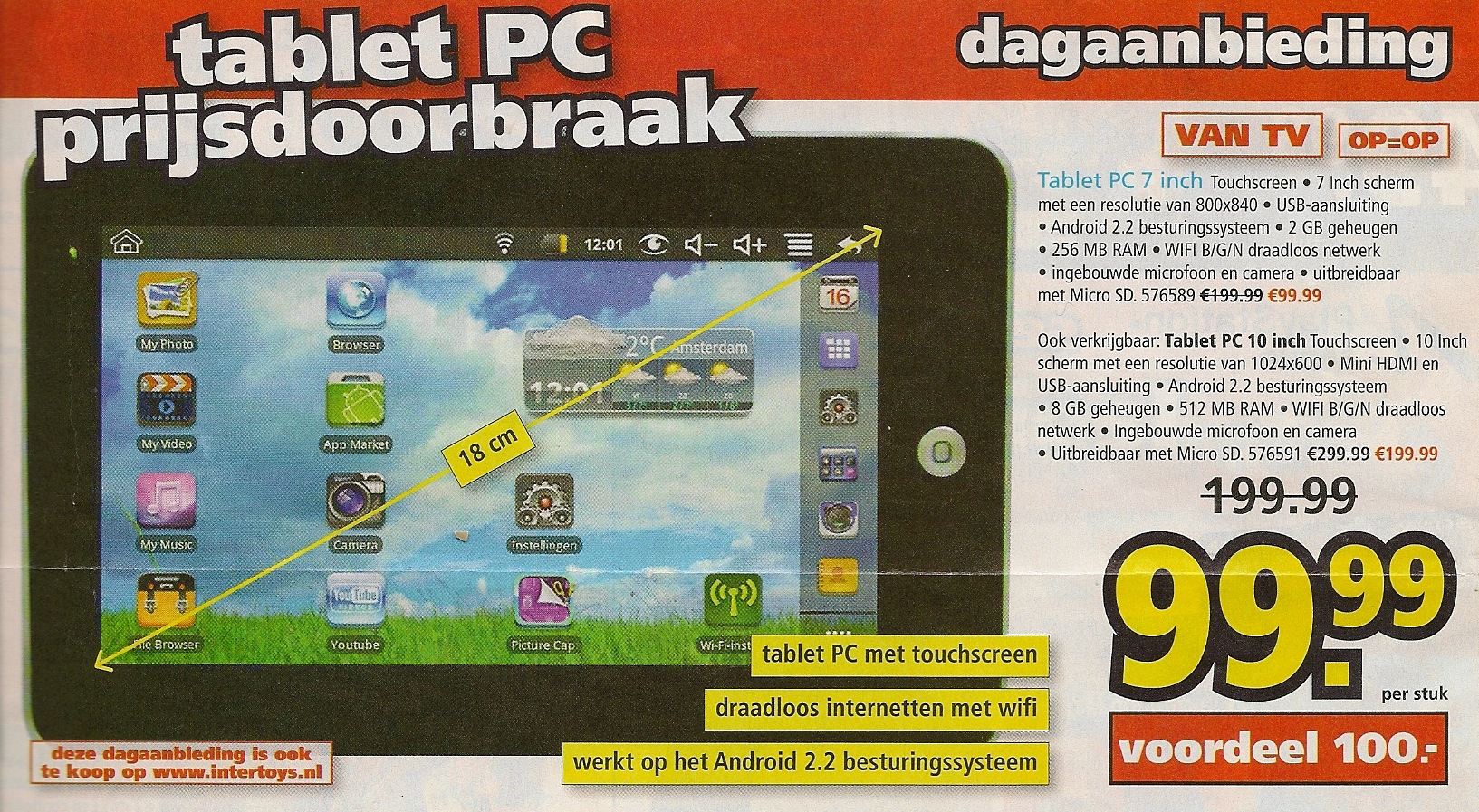
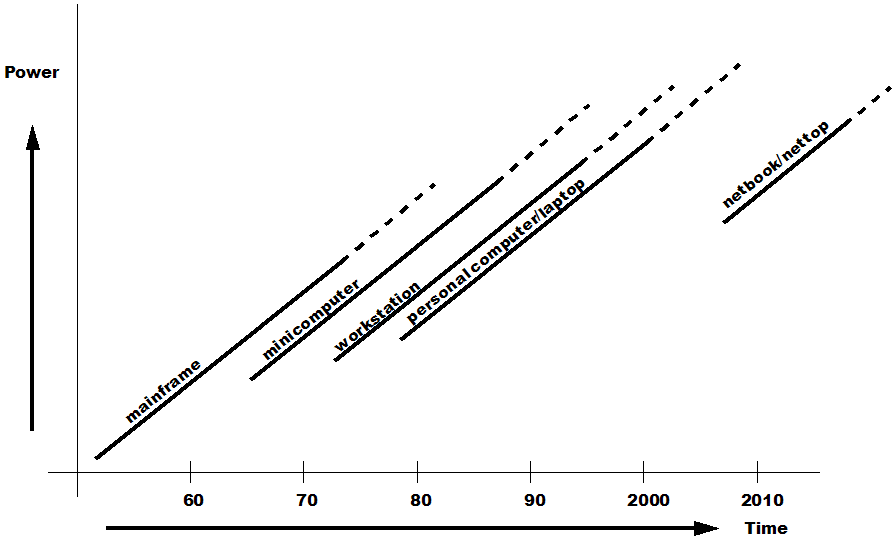
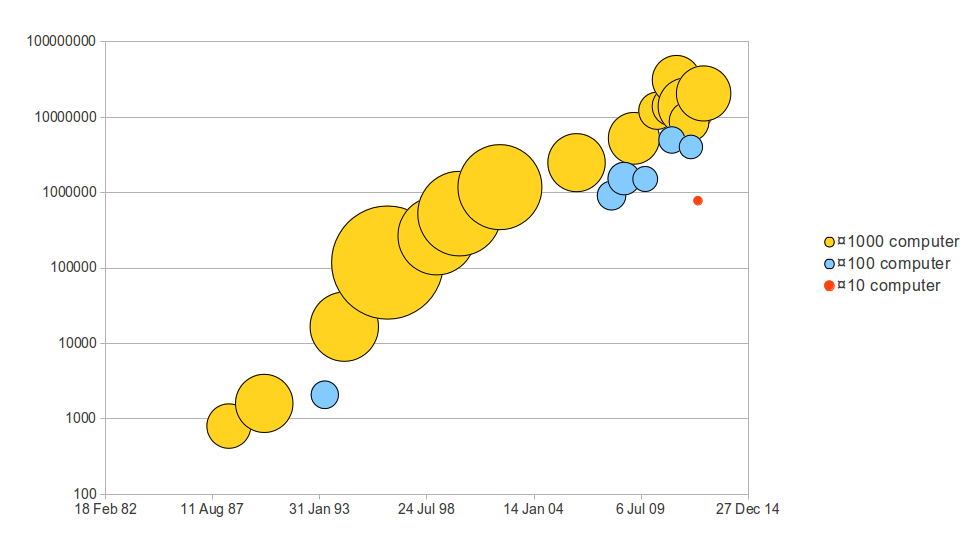
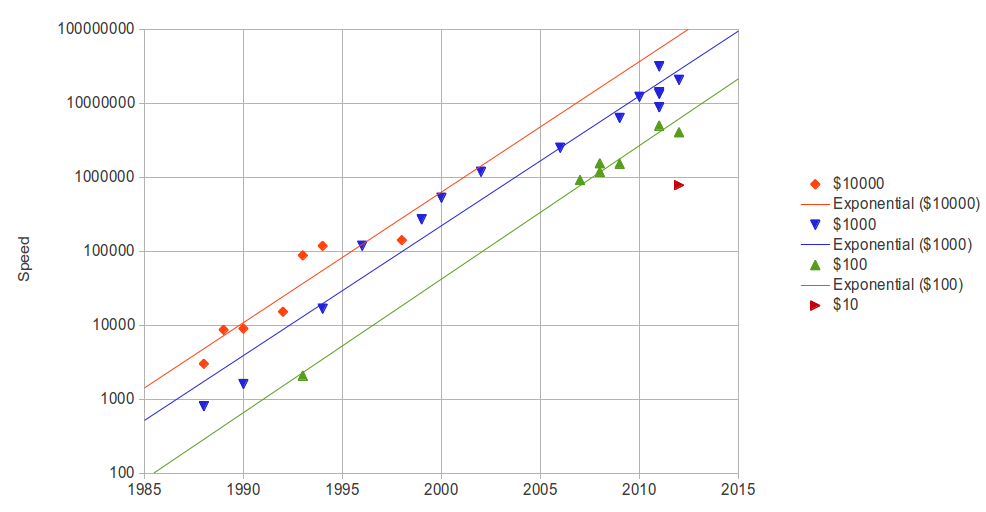
Carry round, plug into larger screens and keyboards. Tablets.
No longer one computer per family: need to store data off the computer.
Bandwidth is doubling per year, documents 'in the cloud'.
 Still working
out how we are going to use it.
Still working
out how we are going to use it.
Certainly we should get close to that in the next decade.
The main problem is packaging costs: it is noticable that once a class of USB memory sticks (for instance 1GB) get to €3, they stop making them, because the next higher class starts reaching that price, and they can't manufacture (and ship) them for less than that.
Still, €3 is ¤1 according to my definition, so we should just reach that point.
The internet was a cooperative effort.
In 1988 arrived in Europe: speed 64kbps connection for the whole of Europe to the whole of America. A year later that doubled to 128kb.
(Just to check, today I did the calculation: if bandwidth doubles per year, that would mean the connection today should be 1Tbps. Checking AMS-IX's statistics page for last year, they had a 2Tbps peak, 1Tb average!)
In 1988, phoning long-distance was expensive, and the further you phoned, the more expensive it was. People considered it reasonable, because it matched their expectations.
In fact, the expensive part is the local loop: only one person (you) is using that. The long-distance part can be amortised over 1000's of calls.
The internet made this all to clear: going to a site in New York is no more expensive than going to one locally (and now, phoning Amsterdam-New York is even cheaper than phoning Amsterdam-Amsterdam!)
Tim Berners-Lee (and Robert Caillau) created the Web at Cern
Just like Gutenberg with the printing press, they brought together many existing technologies (Hypertext, the internet, MIME types) and created a cohesive whole.
Typically people expect that we will use new technologies in the same way we use existing ones.
Steam engines in factories: there was one engine, with lots of pulleys to distribute the power over the factory.
It was assumed that the same would happen with electric engines: one engine in the house with pulleys taking the power to where you needed it.
In houses they thought there would be vacuum cleaner tube attachment points in every room, with one central motor in the basement doing the sucking...
Same with mainframe computers: it was assumed 5 would be enough. Why would people want personal computers? They don't need to do payrolls!
The first books looked like manuscripts.
The first cars looked like carriages.
First radio was like plays, actors still had to dress up.
And the Web is (still) imitating old media.
The current web is still very immature:
Content is presentation-oriented.
Little device independence
Little accessibility
Little machine-readability
Authoring is too hard - needs programming skills.
Interlinking of services
Data doesn't need to be human-readable; in fact it must be machine-readable.
If there is data, make it available! (Amsterdam fireservice has trouble finding out where there are roadworks).
Internet everywhere, lights, oven, your alarm clock: internet over the electric net, so that anything that plugs in can have a connection.
All communication via IP.
Everyone a publisher
Nothing unavailable
True costs - like the internet showed with long distance calls, so we will learn the true cost of content.
A lot of existing information is distributed by people who have concentrations of the means of distribution, and in fact that is the real reason they exist.
Music industry is healthy, record industry is not.
Old media struggling to retain ownership (compare region codes on DVDs)
A change in the means of distribution.
A change in the availability of information.
The end of the hit.
A paradigm shift
My grandparents: when they were born the only 'modern' technologies they knew were trains and photography.
No hot water, no gas or electricity, no flushing toilets.
And think of the changes that they saw in their lifetimes: cars, electricity, radio, movies, talkies, TV, computers, credit cards, cash machines, ...
In fact it seems that paradigm shifts are happening more and more frequently, and have been for a very long time
Make no mistake: we are at a turning point in history. The internet is going to have as great an effect on society as the book did, only much quicker.
Newspapers, music industry, books in trouble? Pah! Nothing. Just wait!
The means of distribution are changing hands.
"The classified ads (and stock market quotations) are the bedrock of the press. Should an alternative form of easy access to such diverse daily information be found, the press will fold." Marshall McLuhan, "Understanding Media", 1964
"We tend to overestimate the effect of a technology in the short run and underestimate the effect in the long run." Roy Amara, The Institute for the Future